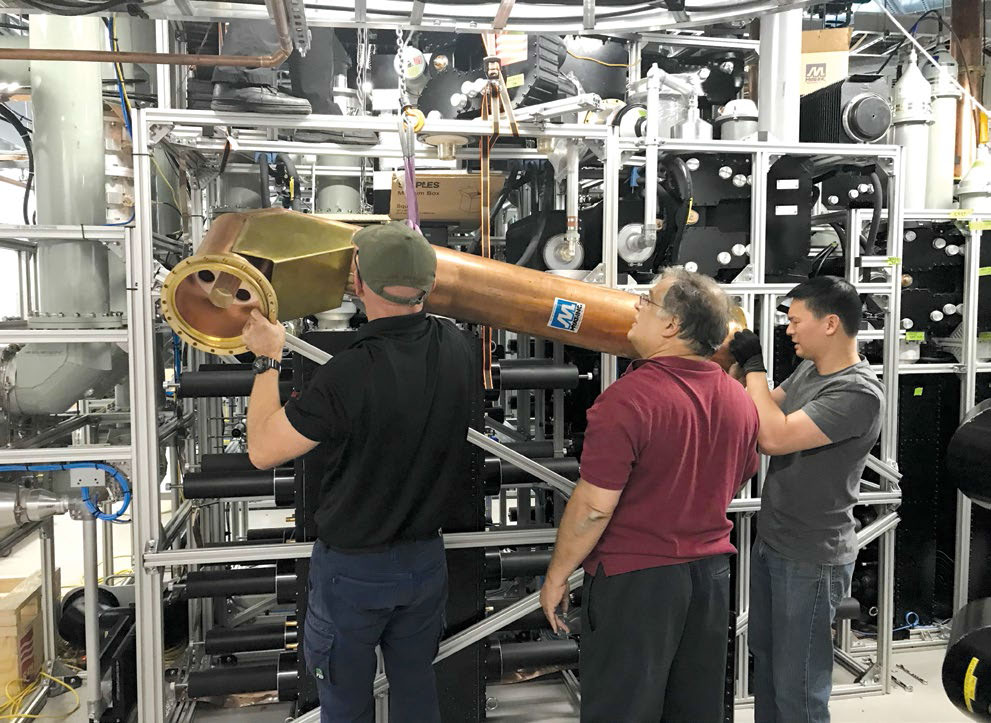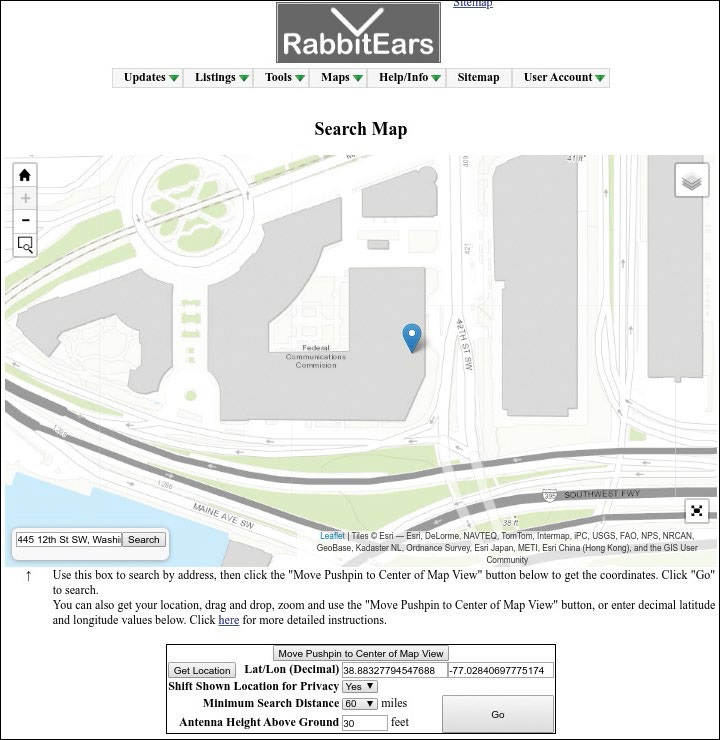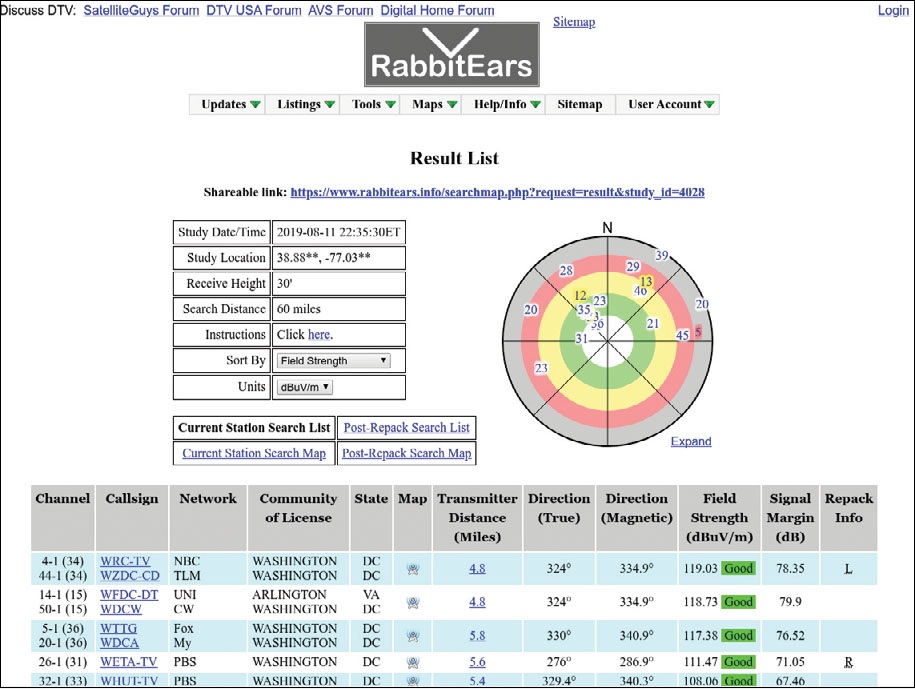
The deadline for Phase 4 of channel repacking in the FCC’s incentive auction has passed and it appears to have been the most challenging one to date. This month I’ll outline some of the Phase 4 experiences and lessons for future transitions, and provide some tips on helping viewers with rescan and reception issues.
I was on the 90th floor of One World Trade Center in New York with the transmitters on Aug. 1 when many stations in Hartford, Conn., New York, Philadelphia and Washington D.C. transitioned to their new channels. The switch took place at 1 p.m., in the middle of the day and not at the 11:59 p.m. Aug. 2 deadline. Boston changed channels at 1:05 p.m. the next day.
Switching channels in the middle of the day has several advantages, the main one being more staff available to help resolve problems or answer viewers’ calls. While the FCC set the phase deadlines on Friday just before midnight, stations can transition anytime during the FCC test period before the deadline on the condition they provide proper public notice and coordinate with other stations.
The Phase 4 deadline was not the trainwreck many feared, but not all stations were able to operate with their final facilities. In at least two markets, New York and Boston, many stations were not able to transition to their final antenna or power because work could not start on the final facilities until the old channels were shutdown. In both cases, however, this had little impact on coverage.
ONE WORLD TRADE CENTER
UHF stations at One World Trade Center were all operating on the upper antenna (RFS PEP40 panel array) on their old channels at reduced power while the RFS combiners (two are necessary to achieve variable polarization) associated with the lower antenna (RFS PEP96L) were tuned to the new channels. You can see a snapshot of the job configuring and tuning the One World Trade Center combiners for the new channels in Fig. 1.

On Aug. 1, One World Trade Center UHF stations switched to the lower antenna and combiner system. For some stations, this was the antenna authorized in their construction permit, but even though they were able to test individually at full power they had to reduce power before all the UHF stations (WCBS-TV, WLIW, WNBC/WNJU, WNYW, WWOR-TV, WPXNTV) could operate on the antenna with a good safety margin. The impact on coverage from use of the One World Trade Center lower antenna and power reduction is minimal, thanks to the overall height of the antenna.
The professional video industry's #1 source for news, trends and product and tech information. Sign up below.
The channel changes occurred on time without incident thanks to the cooperation between all stations involved, including those out-of-market stations receiving interference during testing. Kudos to the tireless work by Joe Giardina and his team at DSI, along with the engineers from RFS, configuring the combiners and Durst Broadcasting’s John Lyons management of the project with what seemed like 24/7 availability.
In Boston, UHF stations on a tower owned by American Tower switched to a shared auxiliary antenna system, which closely matched predicted coverage from the main antenna system now under construction.
An easy way to check whether a station is operating at its final power level on its licensed facilities is to use the LMS search feature under “Technical Data” for the station (https://enterpriseefiling.fcc.gov/dataentry/public/tv/publicSearchLanding.htmlorwww.rabbitears.info).
On www.rabbitears.info, a nonprofit website that tracks broadcast RF developments, “DTV-STA” indicates the station is operating under FCC special temporary authority, usually at reduced power or height. “DTV-LIC” indicates the station is licensed while “DTV-PL” indicates the license is pending. “DTV-CP” indicates the station still has a construction permit for the final facility. For Phase 4 stations, the CP expiration date was Aug. 2, 2019. Stations that were unable to complete construction of their final facilities were allowed a six-month extension of the construction permit to Jan. 29, 2020.
In my last column I described the importance of testing facilities before transitioning. At some of the stations I was working at, this turned out to be a valuable step as problems were discovered (and fixed) prior to the transition that would have caused major problems if they occurred after the switch to the new channels.
In situations where the channel was already in use in the market, the only way extended testing was possible was for the testing station to carry the ASI stream from the current channel occupant during the testing, avoiding any impact to that station’s viewers. Unfortunately, post-transition I saw some problems arise that were not caught during testing. Fortunately, the ones I’m aware of did not take the stations off the air for extended periods of time, but did result in some power reductions and temporary loss of coverage. Extended testing, for as much time as possible, prior to the transition date, should be a priority.
RESCAN REMEDIES
With channel changes comes the need to rescan. What happens, however, if during the first rescan the viewer is unable to receive the channel, perhaps due to the new channel operating at reduced power or height? Here are some tips that may help these viewers.
For technically savvy viewers, some TV sets have a signal quality indicator. If other stations are transmitting from the problem station’s location, optimizing the antenna using this signal meter may allow a rescan to pick up weaker stations. Viewers that are less technically savvy are likely to be confused by this solution.
A simpler option, which can avoid the need for a complete rescan, is to tune the TV set to the RF channel and program number (“Physical Channel” in the Rabbitears listing) of the station. For example, in the case of WRC-TV in Washington, D.C., the RF channel is 34 and the program number for NBC is 3. Punching in 34.3 on a TV set’s remote should take the TV direct to NBC, and, once locked, the displayed channel will change to 4.1.
Channel up to see the other subchannels. If there is no reception, the TV set should stay on 34.3, and the viewer can move the antenna to try to find a location or orientation where the signal can be received. Note this only works in markets where the RF channel and program number combination are not in use as a virtual channel by another station that’s been previously scanned. This should work on most TV sets, but I’d appreciate hearing from readers on the results of using this direct tuning method, noting the make and model of TV if possible.

For many broadcast engineers, www.rabbitears.info is the first stop for information on TV stations. The site provides excellent coverage maps showing contours and field strength as predicted using the Longley- Rice terrain sensitive model. The site has a new feature in beta—the Rabbitears Search Map—available at www.rabbitears.info/searchmap.php. You can enter an address in the box on the lower left of the map, then use the “Move Pushpin to Center of Map View” to put a marker on the exact location, as shown in Fig. 2. An example of the output is shown in Fig. 3.

In markets with stations using mechanical beam tilt on antennas on high mountains, such as Los Angeles, the results from the Rabbitears Search Map will be much more accurate than those from other coverage prediction sites like www.tvfool.com and even the FCC’s www.fcc.gov/media/engineering/dtvmaps. The reason is that many of the antenna patterns stored in the FCC’s database for antennas with mechanical beam tilt are based on the horizontal plane radiation pattern—the power going straight out from the antenna and never hitting the ground. This is why the antenna patterns for Mt. Wilson stations appear to be aimed at Lancaster rather than Los Angeles. Where actual un-tilted antenna pattern is available, Rabbitears uses that pattern rather than the highly distorted horizontal plane antenna pattern, resulting in a much more accurate representation of signal on the ground.
The Rabbitears Search Map should be handy for engineers taking calls from viewers with reception problems as they can enter the address into the map and see what stations the viewer should be able to receive and at what signal strength.
ODDS AND ENDS
Finally this month, I have heard from some sources that Winegard has discontinued or will be discontinuing my favorite indoor/outdoor antenna, the Winegard Freevision FV-30BB. I hope that is not true. The antenna still shows up on Winegard’s website for $39.99 and remains available at some Home Depot stores.
This is the antenna I’ve been using for field strength measurements as it is small, works well on high-VHF, and even does a passable job on low VHF. I was surprised how well it worked picking up WPVI’s Channel 6 signal in Philadelphia during testing there. There are other antennas that have more gain and will do a better job at UHF and VHF, but none I’ve found that are as small as this one—easy to hang on a wall; easy to throw in a car trunk with the mast connected; easy to support on an extendable pole.
One thing I’ve noticed, as have some on www.avsforum.com/forum/25-hdtvtechnical, is that the antenna performs much better than the specifications and patterns from Winegard would indicate. I hope Winegard continues to manufacture it.
As always, I welcome your comments and questions atdlung@transmitter.com. Responses may be delayed if I’m busy, bug me again if you don’t get an answer in a week or two.
For more news and insight on the repack, visit TV Technology'srepack silo.

Doug Lung is one of America's foremost authorities on broadcast RF technology. As vice president of Broadcast Technology for NBCUniversal Local, H. Douglas Lung leads NBC and Telemundo-owned stations’ RF and transmission affairs, including microwave, radars, satellite uplinks, and FCC technical filings. Beginning his career in 1976 at KSCI in Los Angeles, Lung has nearly 50 years of experience in broadcast television engineering. Beginning in 1985, he led the engineering department for what was to become the Telemundo network and station group, assisting in the design, construction and installation of the company’s broadcast and cable facilities. Other projects include work on the launch of Hawaii’s first UHF TV station, the rollout and testing of the ATSC mobile-handheld standard, and software development related to the incentive auction TV spectrum repack. A longtime columnist for TV Technology, Doug is also a regular contributor to IEEE Broadcast Technology. He is the recipient of the 2023 NAB Television Engineering Award. He also received a Tech Leadership Award from TV Tech publisher Future plc in 2021 and is a member of the IEEE Broadcast Technology Society and the Society of Broadcast Engineers.
